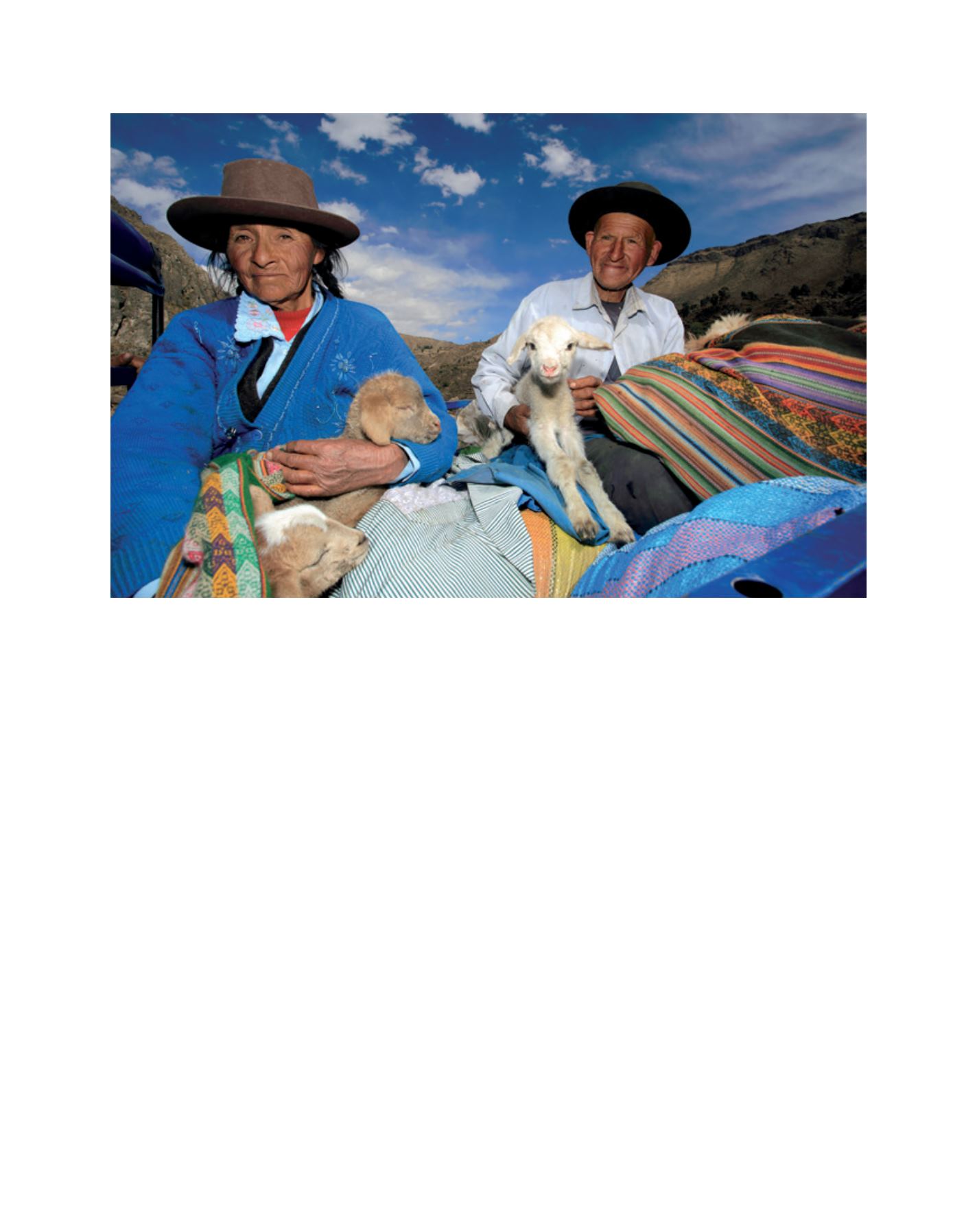

[
] 28
Image: Joseluis Alfredo Franco Castro
‘Sellers of Alpaca meat’, Peru (IYFF photo competition - South America regional winner)
units in almost all Latin American countries, and in many of
these to exceed 90 per cent of the total.
4
There is a great diversity of family farms in Latin America
and the Caribbean, which vary according to the forms of
access to land and its occupation and comprise heteroge-
neous farming styles and agrarian systems. Nevertheless,
perhaps the main characteristic of family farming diversity in
Latin America is neither its agrarian basis nor related to the
variability of agricultural production and livestock systems.
The ethnic and cultural diversity of rural populations and
the impacts of miscegenation resulting from the encounter of
pre-Columbian civilizations (Incas, Aztecs, Guaraní among
others) with the European settlers have eventually created
distinct ways of life, each with their specific form of socia-
bility and strategies of production and interaction with the
ecosystems that characterize peasants and family farmers in
Latin America.
Figures and statistics cannot depict this major heritage of
Latin American society, which is responsible for specific social
formations that sometimes coexist with and are integrated into
the social division of labour, and sometimes are excluded and
marginalized. Added to these main features – diversity and
heterogeneity of family farming in Latin America – there is
also inequality and vulnerability of this social group. A signifi-
cant part of the rural population still lives and reproduces
itself under poverty and insecurity conditions, sometimes
suffering violence and threats by groups that use the rural
space for non-agricultural interests.
Opportunities and challenges
Family farming is part of the rural landscape of Latin America
and the Caribbean and it carries the cultural and ethnic
identities that mark its social diversity. Family farming has
played a crucial role in the historical development of the
region, since family arrangements were decisive in shaping
the agrarian structure. Considering the massive and hegem-
onic presence of family farming in Latin American and
Caribbean societies, we may claim that the economic and
social development of these societies depend upon the stra-
tegic role ascribed to this sector. In some countries, notably
in Central America, family farming represents more than 90
per cent of rural agricultural establishments.
The International Year of Family Farming represents an unprec-
edented opportunity to affirm the importance of family farming in
rural development in Latin America and the Caribbean.
Among the potentialities of family farming it is its funda-
mental role in food production. In many countries of Latin
America and the Caribbean, the agricultural sector remains
the main engine of economic development and the crucial
factor for macroeconomic stabilization. Even in large and
industrialized economies like Brazil, Mexico and Argentina,
the agricultural sector, within which family farming has signif-
icant weight, remains essential. In countries of intermediary
economies such as Chile, Colombia and Uruguay agriculture
also plays a central role. In the least industrialized countries,
family farming is the very basis on which a development strat-
egy could be built. So there is an economic and productive
R
egional
P
erspectives
















